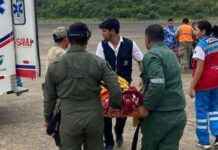An unprecedented test mission worthy of a science fiction novel, which should allow humanity to learn how to protect itself from a possible future threat.
The Dart mission ship had deliberately crashed into the asteroid Dimorphos, which is the satellite of a larger asteroid named Didymos. The NASA device managed to move it by reducing its orbit by 32 minutes, said the head of the space agency, Bill Nelson, during a press conference.
It is “a decisive moment for planetary defense and a decisive moment for humanity”, he welcomed, welcoming that the expectations of his agency had been exceeded.
It would already have been “considered a huge success if it (the craft) had only reduced the orbit by about 10 minutes. But it actually reduced it by 32 minutes,” he added. With this mission, “Nasa has proven that we are serious as defenders of the planet,” he said.
Dimorphos, located some 11 million kilometers from Earth at the time of impact, is about 160 meters in diameter and poses no danger to our planet.
It has so far circumnavigated Didymos in 11 hours and 55 minutes, a shortened period to 11 hours and 23 minutes, Nelson said.
“It looks like a movie script. But it’s not Hollywood (…). This mission shows that NASA is trying to be ready for anything the universe could throw at us,” he said. he declares.
If the objective remained relatively modest compared to the disaster scenarios of science fiction films like “Armageddon”, this unprecedented mission of “planetary defense”, named Dart (dart, in English), is the first to test such a technique. It allows NASA to train in case an asteroid one day threatens to hit the Earth.
“In the future, if we find out that an asteroid is threatening to hit Earth, and it’s big enough to do damage, it will be a relief to have conducted this successful test,” Bill Nelson told Reuters. AFP.
– Egg shape –
To establish how much the asteroid’s trajectory has been altered, it took scientists to analyze data from ground-based telescopes in Chile, South Africa and the United States. The latter observed the variation in brightness when the small asteroid passes in front of and behind the large one.
Soon after the collision, early images — taken by ground-based telescopes and the onboard nano-satellite for the LICIACube mission — showed a vast dust cloud around Dimorphos, stretching for thousands of kilometres.
Then the James Webb and Hubble telescopes, the most powerful space observatories, revealed detailed views of the impact of the NASA spacecraft, showing in particular the movement of ejecta – the material torn from the star.
All this should make it possible to better understand the composition of Dimorphos, representative of a population of fairly common asteroids, and therefore to measure the exact effect that this technique – called kinetic impact – can have on them.
Images of Dimorphos, taken shortly before impact, show its surface to be gray and rocky and egg-shaped.
The mission revealed that the asteroid was more like an amalgam of large rocks linked by their mutual gravity than a solid mass.
The kamikaze ship had traveled for ten months since its takeoff, in California.
Nearly 30,000 asteroids of all sizes have been cataloged in the vicinity of Earth.
Today, none of these known asteroids threaten our planet for the next 100 years. Except that not all of them are listed yet.
Those of a kilometer or more have almost all been spotted, according to the scientists. But they estimate that they only know about 40% of asteroids measuring 140 meters or more — those capable of devastating an entire region.








